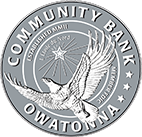You never need to pay to sign up for government student loan debt relief programs — but scammers will tell you otherwise. Here’s how to spot scam companies that charge illegal upfront fees for so-called help with your student loans.
The first thing to know is this: you don’t have to pay for help managing your student loans. If someone tries to charge you up front, before they’ve done anything, that’s your first clue that this is a scam. And nobody but a scammer will ever offer you quick loan forgiveness.
Take, for example, Apex, a company that — according to an FTC lawsuit — enrolled people in their sham student loan forgiveness program. During the federal student loan pause, when most borrowers weren’t in contact with their loan servicers, Apex signed people up for what they called debt relief programs.
So, how did they convince borrowers to get on board? Apex employees pretended they worked with the Department of Education (they didn’t) and told borrowers they were their new loan servicers (they weren’t). They then signed borrowers up to make automatic payments to a debt relief program that didn’t exist. The problem? Payments went to Apex’s pockets, rarely making it to actual loan servicers. And, to add insult to injury, the COVID-19 federal student loan pause meant that federal borrowers didn’t have to make any loan payments starting March 2020.
Now that the return to repayment is coming up, start at StudentAid.gov/repay to look at the status of your federal student loans. You’ll find, among other things, information on income-driven repayment plans that adjust your monthly payment based on your income. If your loans are private, go directly to your loan servicer. And if you spot a scam, the FTC wants to know about it: ReportFraud.ftc.gov.
